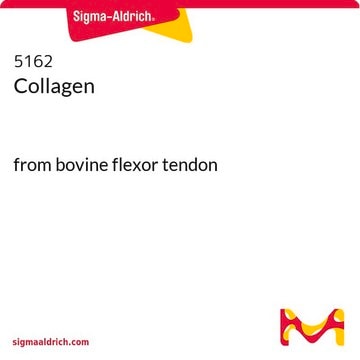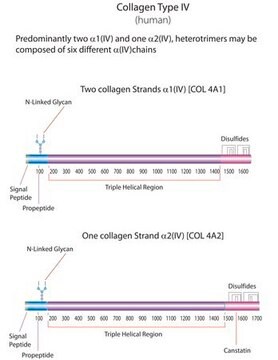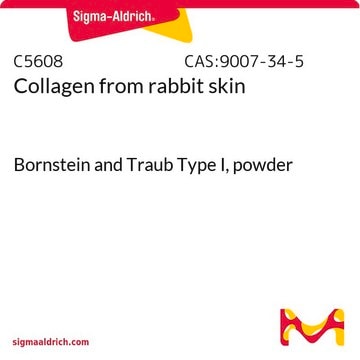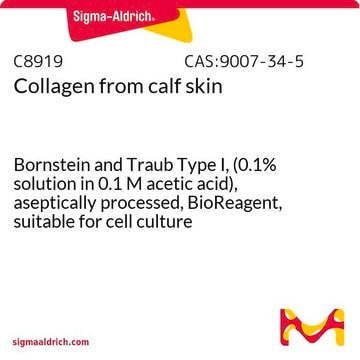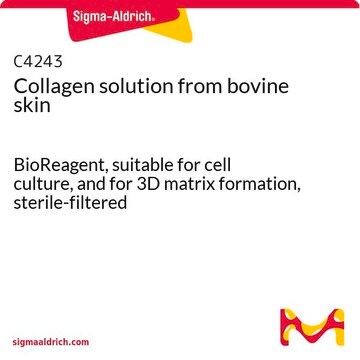C5483
Human Collagen Type I
from human placenta, powder, ~95% (SDS-PAGE), suitable for cell culture
Größe auswählen
About This Item
Empfohlene Produkte
Produktbezeichnung
Kollagen human, Bornstein and Traub Type I, acid soluble, powder, ~95% (SDS-PAGE)
Biologische Quelle
human
Qualitätsniveau
Assay
~95% (SDS-PAGE)
Form
powder
Methode(n)
cell culture | stem cell: suitable
Löslichkeit
aqueous acid: ≤5 mg/mL
UniProt-Hinterlegungsnummer
Lagertemp.
2-8°C
Angaben zum Gen
human ... COL1A2(1278)
Suchen Sie nach ähnlichen Produkten? Aufrufen Leitfaden zum Produktvergleich
Allgemeine Beschreibung
Anwendung
Collagen Type I has been used as a scaffold for the growth in vitro of stem cells in a wide variety of biomaterial engineering studies.[3][4]
- as a component of extracellular matrix in the chemotaxis assay of the rat adipose-derived stem cells[5]
- in adhesion assay of the adult retinal pigmented epithelium-19 (ARPE-19) cell line[6]
- in the glycation aggregation and adsorption studies as a model system for arthritis[7]
Biochem./physiol. Wirkung
Angaben zur Herstellung
Lagerklassenschlüssel
11 - Combustible Solids
WGK
WGK 1
Flammpunkt (°F)
Not applicable
Flammpunkt (°C)
Not applicable
Persönliche Schutzausrüstung
Eyeshields, Gloves, type N95 (US)
Hier finden Sie alle aktuellen Versionen:
Besitzen Sie dieses Produkt bereits?
In der Dokumentenbibliothek finden Sie die Dokumentation zu den Produkten, die Sie kürzlich erworben haben.
Kunden haben sich ebenfalls angesehen
Active Filters
Unser Team von Wissenschaftlern verfügt über Erfahrung in allen Forschungsbereichen einschließlich Life Science, Materialwissenschaften, chemischer Synthese, Chromatographie, Analytik und vielen mehr..
Setzen Sie sich mit dem technischen Dienst in Verbindung.
